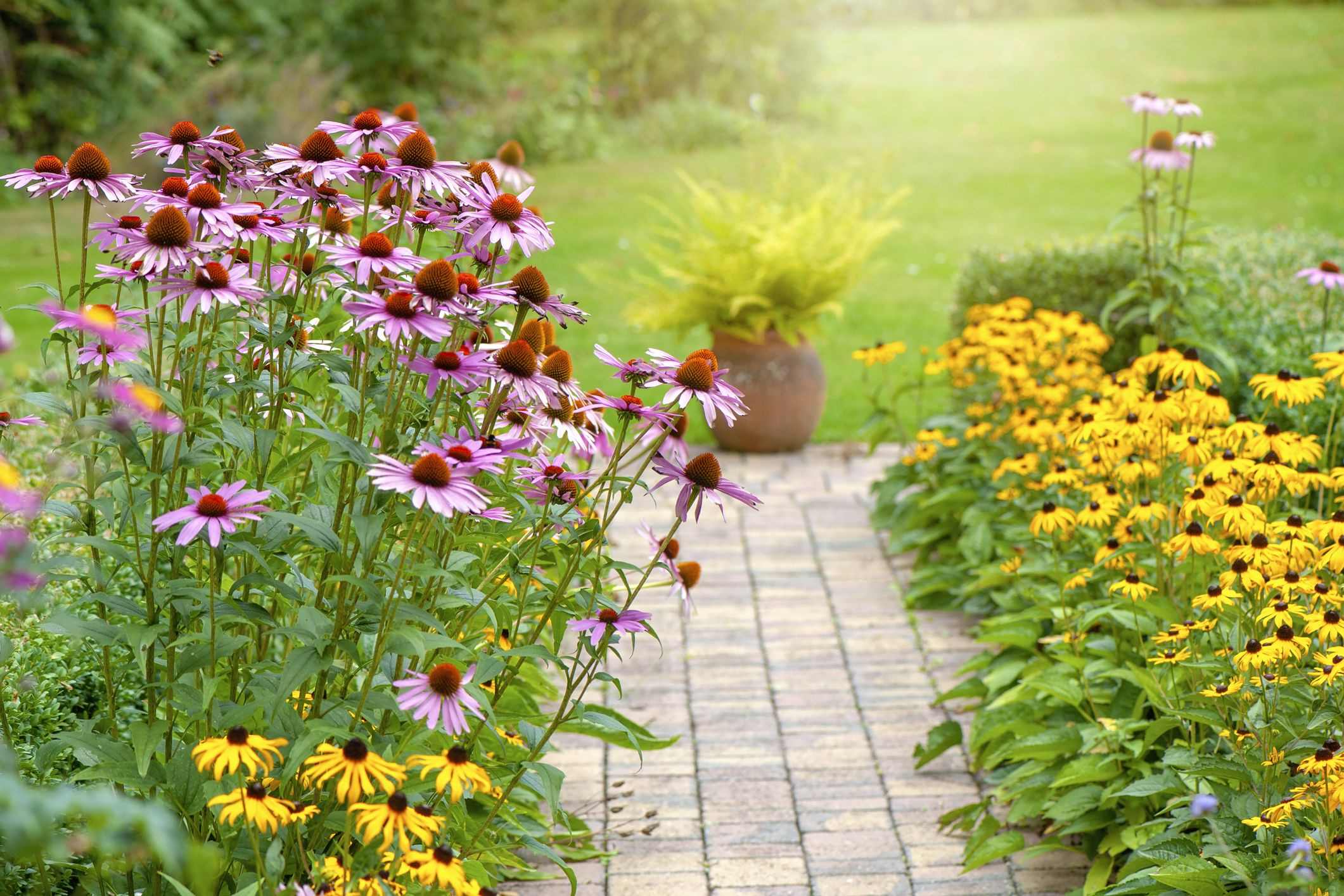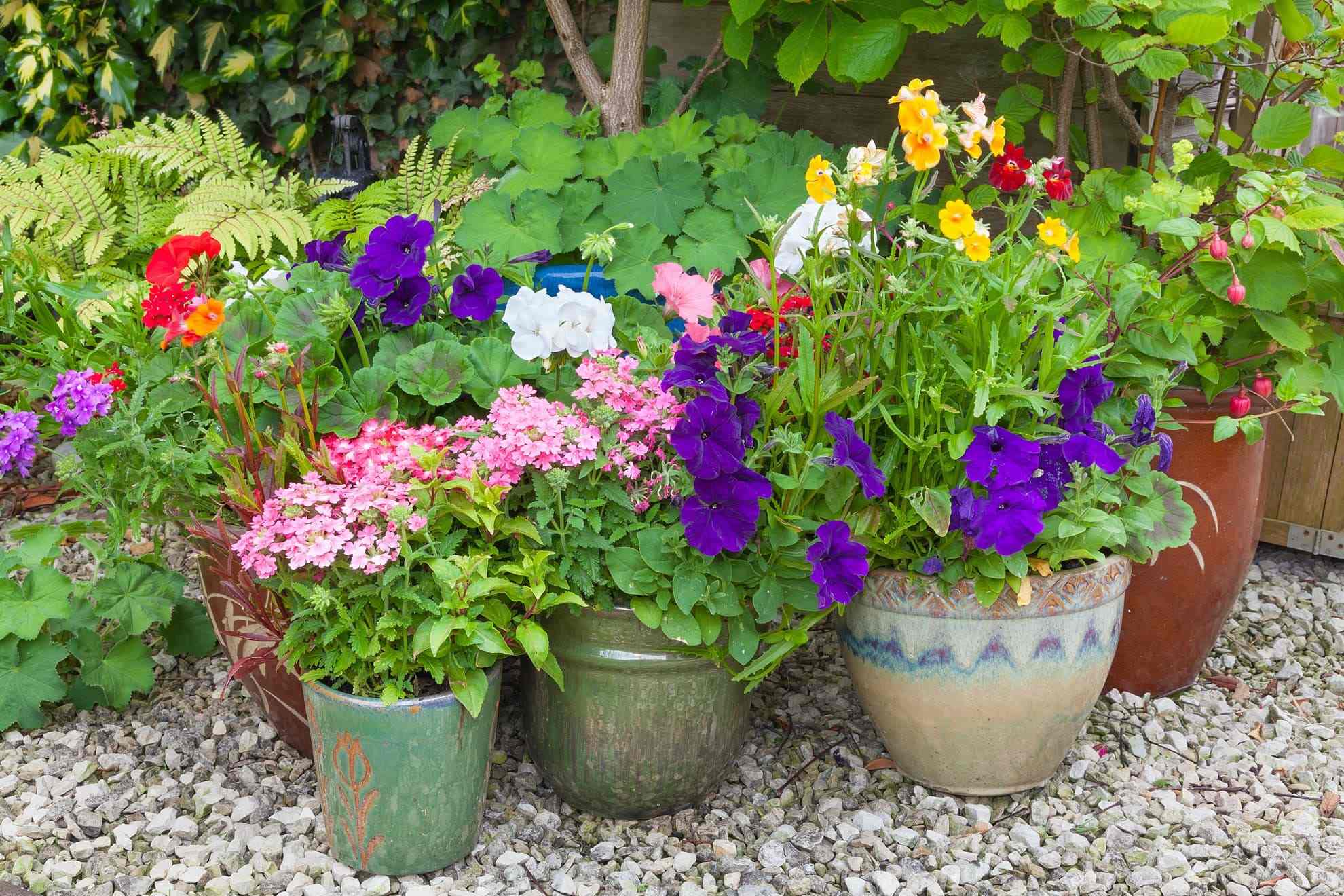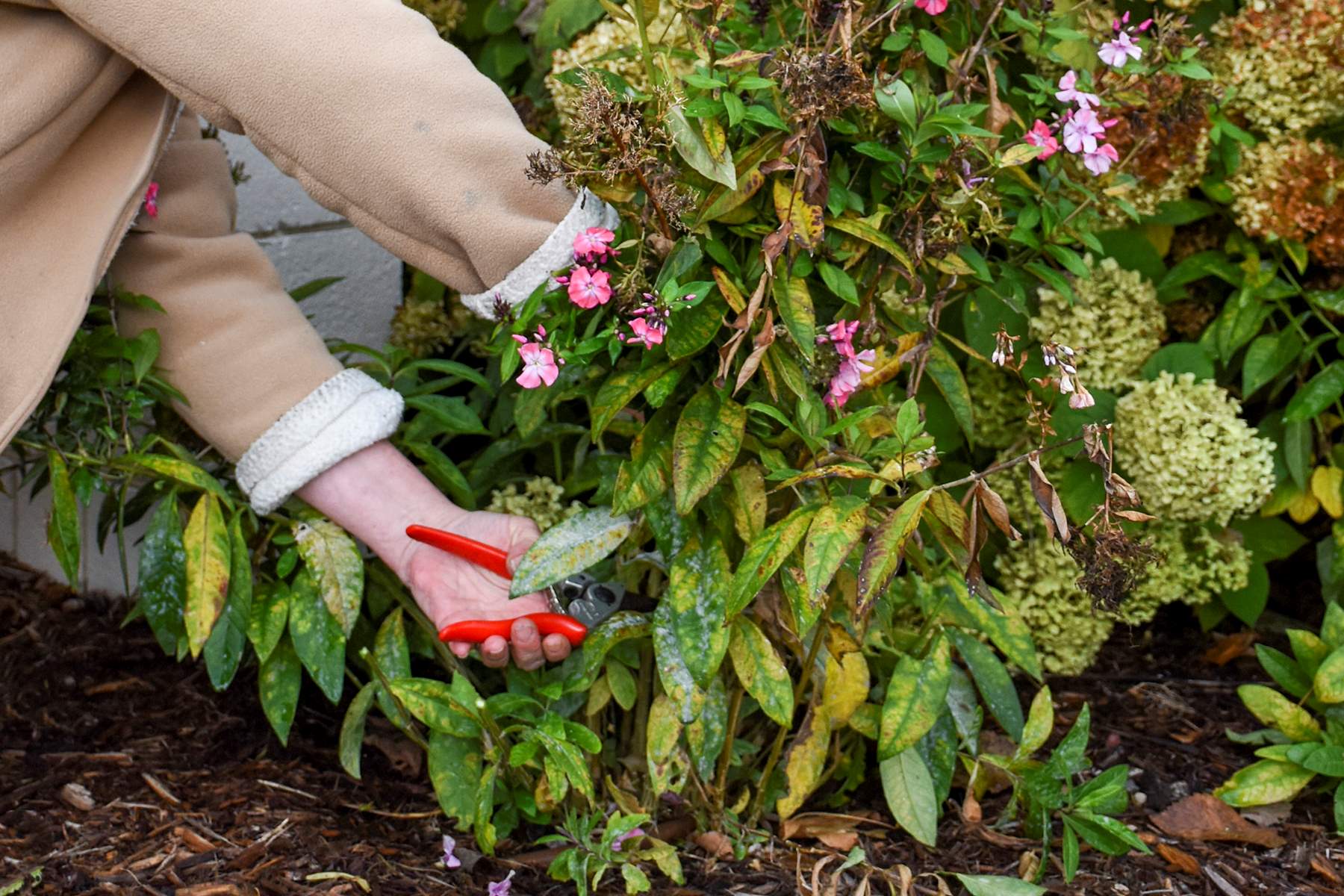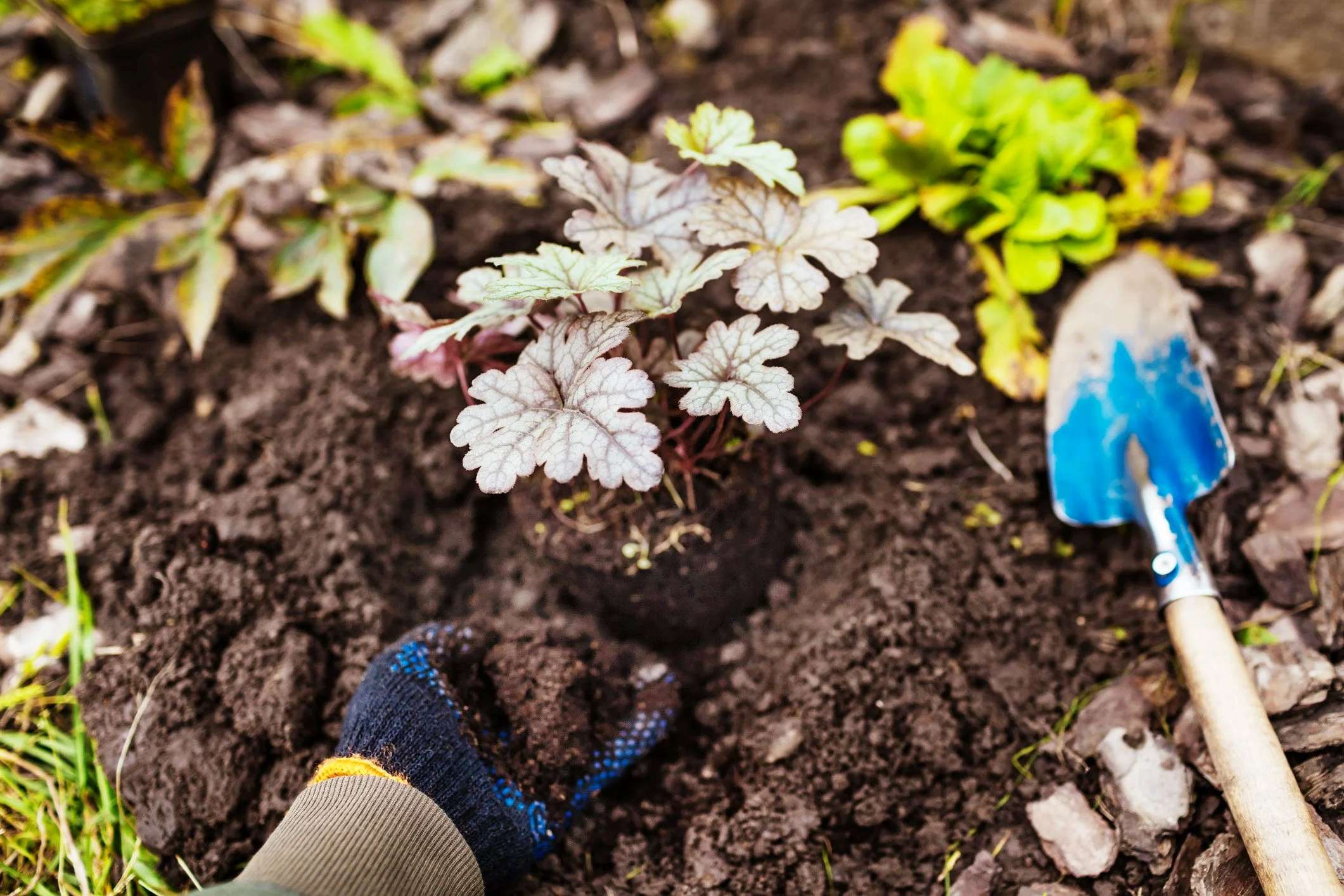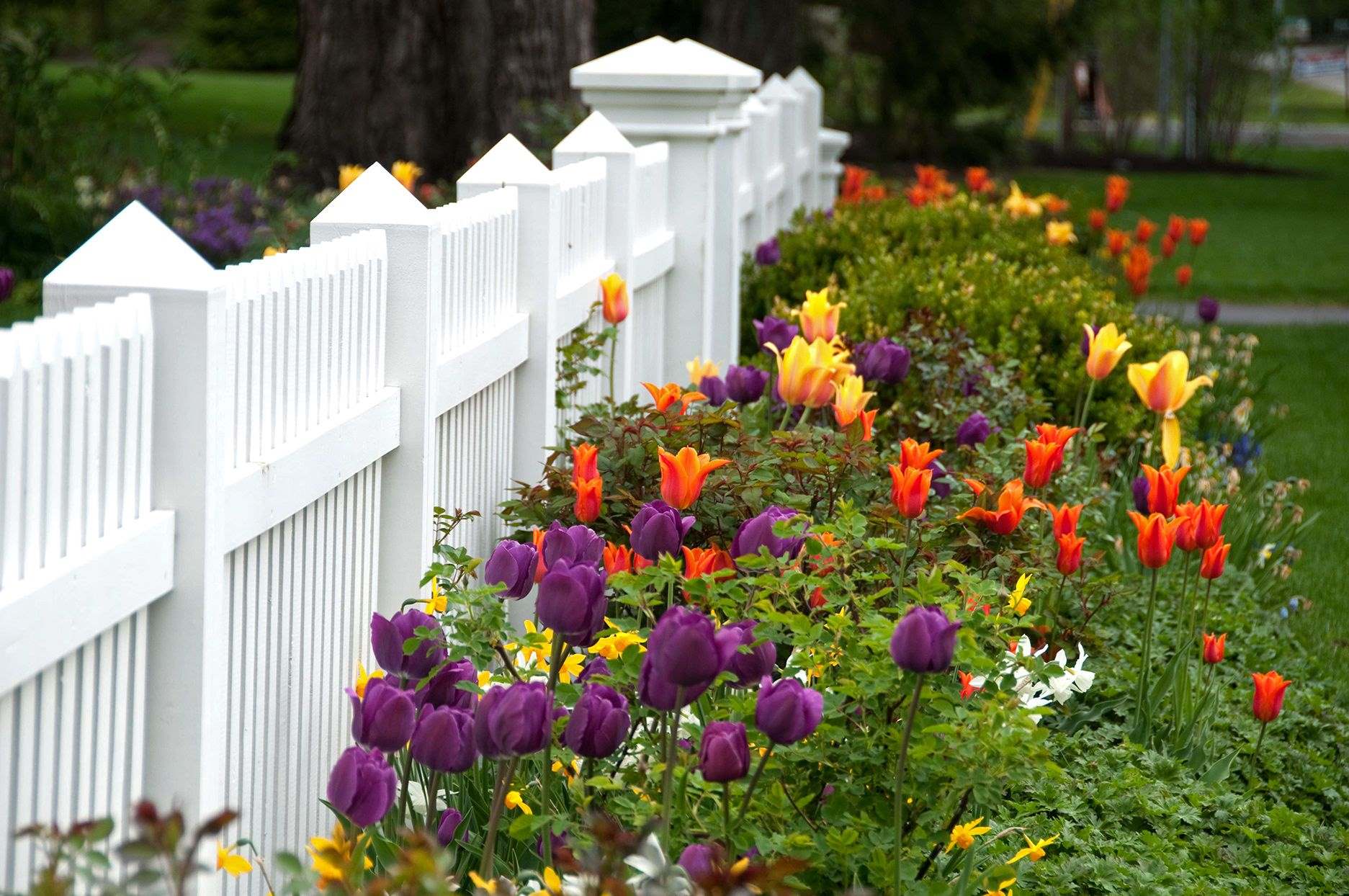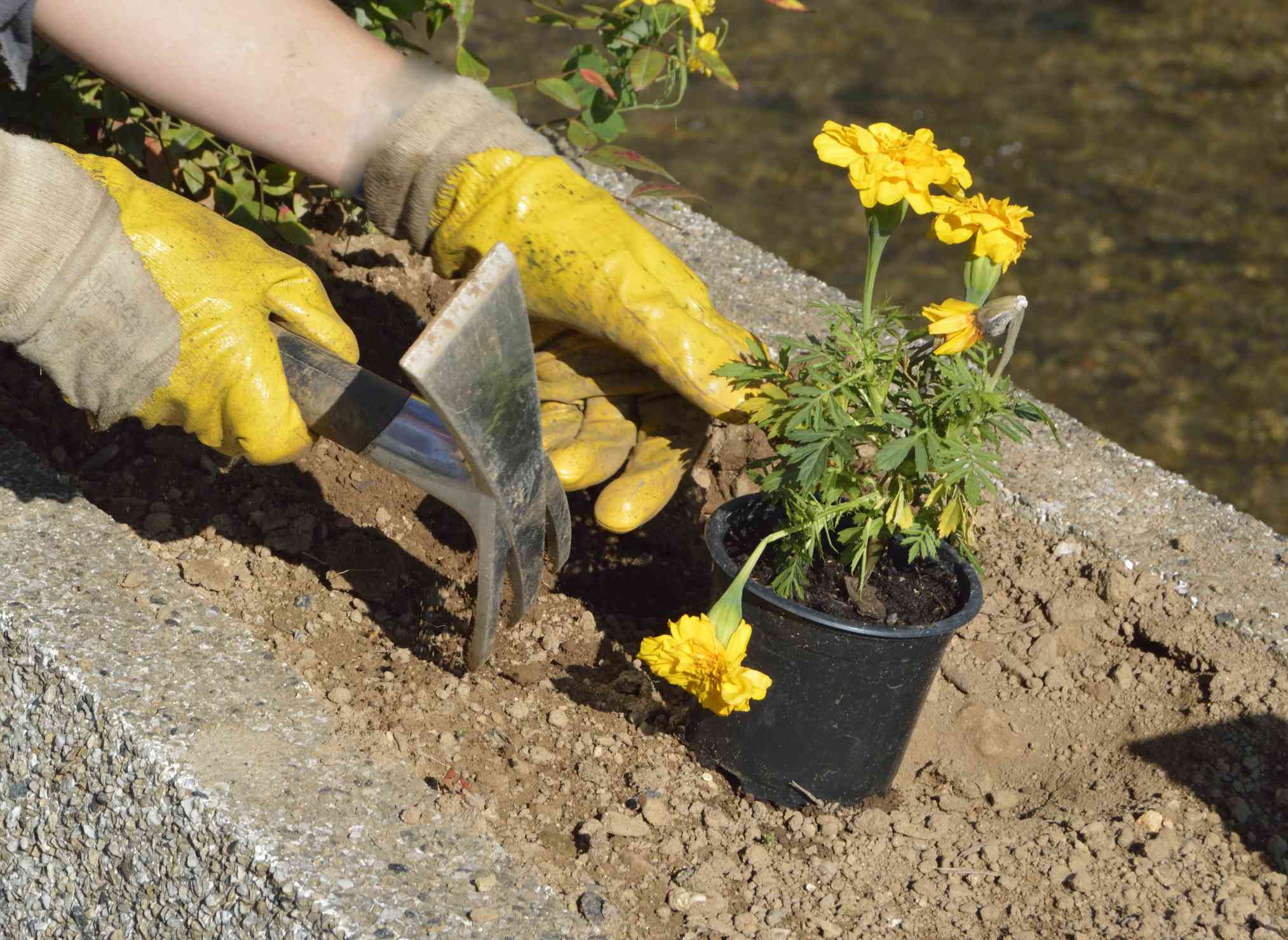Home>Gardening Techniques>Seasonal Gardening>When To Plant Perennials In Illinois
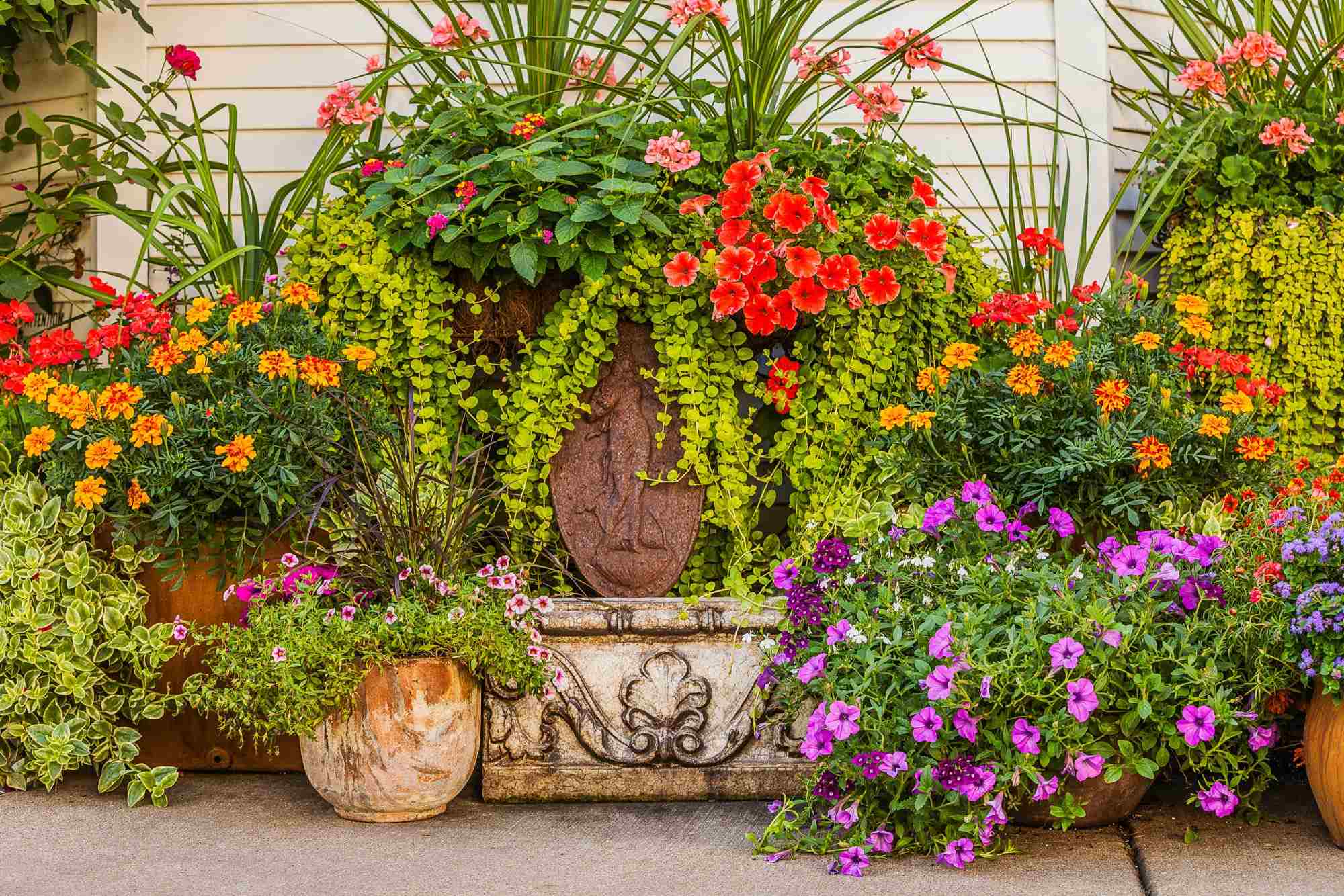

Seasonal Gardening
When To Plant Perennials In Illinois
Modified: January 22, 2024
Learn when to plant perennials in Illinois and get expert tips and advice for successful seasonal gardening.
(Many of the links in this article redirect to a specific reviewed product. Your purchase of these products through affiliate links helps to generate commission for Chicagolandgardening.com, at no extra cost. Learn more)
Table of Contents
Introduction
Seasonal gardening in Illinois offers a multitude of opportunities for plant enthusiasts to turn their outdoor spaces into vibrant oases of natural beauty. From spring blooms to winter evergreens, there is no shortage of options for creating a stunning garden that thrives throughout the year. Understanding the best time to plant perennials is the key to achieving long-lasting and successful garden growth.
Perennials, plants that live for more than two years, are a popular choice among gardeners due to their ability to come back year after year, requiring less maintenance compared to annuals. Illinois, located in the heart of the Midwest, experiences a diverse climate that influences the optimal planting time for perennials.
This article will guide you through the unique climate and growing zones in Illinois, discuss the best time for planting perennials, explore important factors to consider, provide helpful tips for successful planting, and highlight some popular perennial choices for Illinois gardens.
Climate and Growing Zones in Illinois
Understanding the climate and growing zones in Illinois is essential for successful perennial gardening. The state has a diverse range of climates due to its large size and geographical variation. The northern regions experience a cool-temperate climate, while the southern parts have a humid subtropical climate.
Illinois is divided into several growing zones based on the USDA Plant Hardiness Zone Map. Zone 5 is the most common, covering a majority of the state, including cities like Chicago, Springfield, and Bloomington. In Zone 5, the average annual minimum temperature ranges from -20 to -10 degrees Fahrenheit (-29 to -23 degrees Celsius).
Other zones in the state include Zone 4b in the northernmost regions, where temperatures can drop even further, and Zone 6 in the southernmost areas, which have milder winter conditions.
These different growing zones impact the choice of perennials and the ideal planting time. Perennials that thrive in the cooler temperatures of northern Illinois may struggle to survive the hot and humid conditions of southern Illinois. Therefore, it is important to select perennials that are suitable for the specific growing zone in which you reside.
When planning your perennial garden, be sure to research the specific growing zone you are in and choose plants that are recommended for that zone. This will increase the likelihood of success and ensure that your perennials can withstand the local climate conditions.
Understanding Perennials
Before diving into the best time to plant perennials in Illinois, it’s important to have a solid understanding of what perennials are and how they differ from annuals and biennials. Perennials are plants that live for more than two years, often continuing to grow and bloom year after year. Unlike annuals, which complete their life cycle in one growing season, and biennials, which take two years to complete their life cycle, perennials have the ability to establish a permanent root system that allows them to survive and thrive for multiple seasons.
Perennials come in a variety of forms, including flowers, grasses, vines, and shrubs. They offer a wide range of colors, sizes, and textures, making them an excellent choice for adding diversity and interest to your garden.
One of the key benefits of perennials is their ability to provide long-lasting beauty with minimal maintenance. Once planted, perennials require less attention compared to annuals, as they do not need to be replanted every year. With proper care and maintenance, perennials can continue to bloom and flourish for many years.
It’s important to note that not all perennials are suitable for every climate or growing zone. Different varieties have specific temperature and sunlight requirements, and it’s essential to select plants that are well-suited for your particular environment.
Perennials can be categorized into three main groups: herbaceous perennials, woody perennials, and semi-woody perennials. Herbaceous perennials, such as daylilies and hostas, have soft, non-woody stems that die back to the ground during the winter. Woody perennials, like roses and hydrangeas, have permanent above-ground parts that remain even during the dormant season. Semi-woody perennials, such as lavender and salvias, have a combination of both soft and woody stems.
Understanding the different types of perennials and their growth habits is crucial for selecting the right plants for your garden and ensuring they thrive in the specific climate and growing conditions in Illinois.
Best Time to Plant Perennials in Illinois
The timing of when to plant perennials in Illinois plays a significant role in their establishment and long-term success. While perennials can be planted at various times throughout the year, there are specific seasons that are generally considered optimal for planting and ensuring the plants have the best chance of thriving.
Spring is often touted as the ideal time to plant perennials in Illinois. As the ground thaws and temperatures start to rise, plants have plenty of time to establish their root systems before the heat of summer sets in. This allows them to take full advantage of the growing season and become well-established.
Early spring, typically between March and April, is a prime time for planting cool-season perennials in Illinois. These include plants such as bleeding hearts, columbines, and hellebores. These perennials prefer cooler temperatures and tend to bloom earlier in the season, adding a burst of color to the garden.
For warm-season perennials, such as coneflowers, black-eyed Susans, and daylilies, late spring, usually between May and early June, is the ideal time to plant. By this time, soil temperatures have warmed up, providing optimal conditions for root growth. The longer days and moderate temperatures of late spring allow the newly planted perennials to establish themselves before the hot summer months arrive.
While spring is generally preferred for perennial planting, fall also presents a suitable opportunity, especially for certain varieties. Late summer and early fall, typically between August and September, provide a window of opportunity to plant perennials that prefer cooler soil temperatures and milder weather. Fall planting allows the roots to develop and become established before winter dormancy sets in.
It’s worth noting that extreme temperatures can impact the success of newly planted perennials. It’s best to avoid planting during periods of intense heat in summer or during freezing temperatures in winter.
Ultimately, the best time to plant perennials in Illinois depends on the specific climate, growing zone, and the type of perennials you are planning to grow. It’s always advisable to consult local gardening resources, including cooperative extension offices, nurseries, and experienced gardeners, for more precise guidance on the optimal planting times for your specific area.
Factors to Consider Before Planting Perennials
Before you start planting perennials in your Illinois garden, there are several important factors to consider. These factors will help ensure the success and long-term health of your plants, and help you make informed decisions about your gardening choices.
1. Growing Zone: As mentioned earlier, understanding your specific growing zone is crucial for selecting the right perennials. Different varieties have different temperature and sunlight requirements, and choosing plants that are adapted to your zone will increase their chances of thriving.
2. Soil Conditions: Evaluate your soil’s pH level, drainage capabilities, and fertility. Most perennials prefer well-drained soil with a slightly acidic to neutral pH. Consider amending the soil with organic matter to improve its texture and fertility.
3. Sunlight Requirements: Assess the amount of sunlight your garden receives throughout the day. Full sun refers to 6 or more hours of direct sunlight, while partial sun or shade indicates a garden with varying levels of sunlight. Choose perennials that are suitable for your garden’s sun exposure.
4. Mature Plant Size: Consider the eventual size of the perennial at maturity. Planting perennials in appropriate locations and spacing them correctly will prevent overcrowding in the future and allow each plant to reach its full potential.
5. Watering Needs: Perennials have varying water requirements. Take into account the natural rainfall in your area and whether you will need to supplement with additional watering, especially during dry periods. Be mindful not to overwater, as this can lead to root rot.
6. Companion Planting: Consider combining perennials that complement each other in color, texture, and blooming times. Companion planting can enhance the aesthetic appeal of your garden and provide ecological benefits, such as attracting beneficial insects or repelling pests.
7. Wildlife Considerations: Think about the types of wildlife you want to attract to your garden, such as butterflies, bees, or birds. Choose perennials that provide nectar, pollen, or food sources for these creatures, creating a biodiversity-friendly environment.
By taking these factors into account, you can create a well-planned and harmonious perennial garden that meets the specific needs of your Illinois landscape.
Tips for Planting Perennials in Illinois
Planting perennials in your Illinois garden can be a rewarding and enjoyable experience. To ensure the best results and promote the healthy growth of your plants, consider these helpful tips:
1. Choose Healthy Plants: Select perennials that are vigorous and disease-free. Look for plants with well-developed root systems and lush foliage. Avoid plants with yellowing or browning leaves, as this may indicate poor health.
2. Prepare the Soil: Prepare the planting area by removing weeds, rocks, and debris. Loosen the soil with a garden fork or tiller and amend it with compost to improve drainage and fertility.
3. Planting Depth: Follow the specific planting depth recommendations for each perennial variety. Generally, the crown of the plant (where the stem meets the roots) should be level with or slightly above the soil surface. Planting too deep can suffocate the plant, while planting too shallow leaves the roots vulnerable to drying out.
4. Spacing: Provide adequate spacing between perennials to allow for proper airflow and future growth. Overcrowding can lead to disease and competition for resources. Consult the plant’s labeling or a reputable gardening resource for recommended spacing guidelines.
5. Watering: Immediately after planting, thoroughly water your perennials to settle the soil and ensure good root-to-soil contact. Afterward, establish a regular watering schedule, providing enough water to keep the soil moist but not waterlogged. Avoid overhead watering, as it can lead to foliage diseases.
6. Mulching: Apply a layer of organic mulch around the base of your perennials to help retain moisture, suppress weeds, and regulate soil temperature. Leave a gap around the stem to prevent moisture-related diseases.
7. Staking and Support: Some taller perennials may require staking or support to prevent them from bending or toppling over. Install supports early on to minimize damage to the plant later in the growing season.
8. Deadheading and Pruning: Remove spent flowers regularly to encourage continued blooming and prevent seed production. Prune back foliage in the fall to promote healthy growth in the following season. Follow specific pruning guidelines for each perennial variety.
9. Winter Protection: Many perennials in Illinois require protection from harsh winter conditions. Apply a layer of mulch or straw around the base of the plants in late fall to insulate the soil and protect the roots from freezing temperatures.
10. Regular Maintenance: Keep an eye out for pests, diseases, and nutrient deficiencies. Address any issues promptly to maintain the health and vitality of your perennials. Regularly divide and transplant overcrowded perennials to promote healthier growth and rejuvenate the plant.
By following these tips, you can ensure the successful establishment and long-term beauty of your perennial garden in Illinois.
Common Perennials for Illinois Gardens
When it comes to selecting perennials for your Illinois garden, there is an abundance of options to choose from. Consider these popular perennial choices that are well-suited for the diverse climate and growing conditions in Illinois:
1. Black-eyed Susan (Rudbeckia fulgida): This native perennial features bright yellow daisy-like flowers with dark centers. Black-eyed Susans are known for their long bloom period, attracting pollinators and providing a burst of color throughout the summer.
2. Coneflower (Echinacea purpurea): With their distinctive daisy-like flowers, coneflowers are a staple in many Illinois gardens. They come in various colors, including purple, pink, and white, and are prized for their ability to attract butterflies and other beneficial pollinators.
3. Daylily (Hemerocallis): Daylilies are known for their showy blooms that come in a wide array of colors and patterns. They are low-maintenance perennials that can tolerate different soil conditions and are perfect for adding pops of color to borders and beds.
4. Hosta (Hosta spp.): Hostas are shade-loving perennials, making them an ideal choice for gardens with limited sunlight. They have lush foliage in various shades of green and provide contrasting textures. They are also deer-resistant, making them popular in areas with wildlife pressure.
5. Salvia (Salvia spp.): Salvia is a diverse group of perennials that includes both herbaceous and woody varieties. They offer vibrant flowers in shades of blue, purple, red, and pink, and are known for their attractiveness to hummingbirds and butterflies.
6. Russian Sage (Perovskia atriplicifolia): Russian Sage is a tough and drought-tolerant perennial that features aromatic silver-gray foliage and spikes of lavender-blue flowers. It adds a touch of elegance and vertical interest to the garden and is highly attractive to bees.
7. Astilbe (Astilbe spp.): Astilbes are valued for their feathery plumes of flowers in shades of pink, red, white, and purple. They thrive in moist, shady locations and are popular for adding color and texture to woodland gardens.
8. Peony (Paeonia): Peonies are beloved for their large, fragrant flowers and lush foliage. They come in a variety of colors and can be found in both herbaceous and tree peony forms. Peonies are long-lived perennials that can provide decades of beauty with minimal care.
These are just a few examples of the many perennials that thrive in Illinois gardens. When selecting perennials, consider your specific growing conditions, personal preferences, and the desired aesthetic for your garden. Experiment with different combinations and take advantage of the wide range of perennials available to create a stunning and vibrant Illinois garden.
Conclusion
In Illinois, planting perennials can transform your garden into a flourishing and vibrant space year after year. By understanding the climate and growing zones specific to Illinois, as well as the unique characteristics of perennials, you can make informed decisions about when and what to plant. Consider the factors such as soil conditions, sunlight requirements, and water needs before embarking on your perennial gardening journey.
Timing is crucial when it comes to planting perennials in Illinois. While spring is generally the optimal time, taking advantage of the cooler temperatures and longer growing season, fall can also present an opportunity for certain varieties. By carefully selecting healthy plants and following proper planting techniques, you can establish a strong foundation for your perennials to thrive.
Maintaining your perennial garden requires regular care, including watering, mulching, and deadheading. Monitoring for pests, diseases, and nutrient deficiencies will help ensure the long-term health of your plants. Consider incorporating wildlife-friendly elements and companion planting to create a balanced and ecological garden environment.
With a range of popular perennials to choose from, such as coneflowers, black-eyed Susans, daylilies, and hostas, you have the opportunity to create a diverse and visually stunning Illinois garden. By selecting plants suited to your specific growing zone and taking into account the unique climate and characteristics of your area, you can enjoy the beauty of perennials for years to come.
Whether you’re a seasoned gardener or just beginning, the world of perennial gardening in Illinois offers endless possibilities. Embrace the joy of watching your perennials come back year after year, bringing color, fragrance, and life to your outdoor space. With careful planning, proper care, and a touch of creativity, you can create a flourishing perennial garden that will be the envy of your neighborhood.
